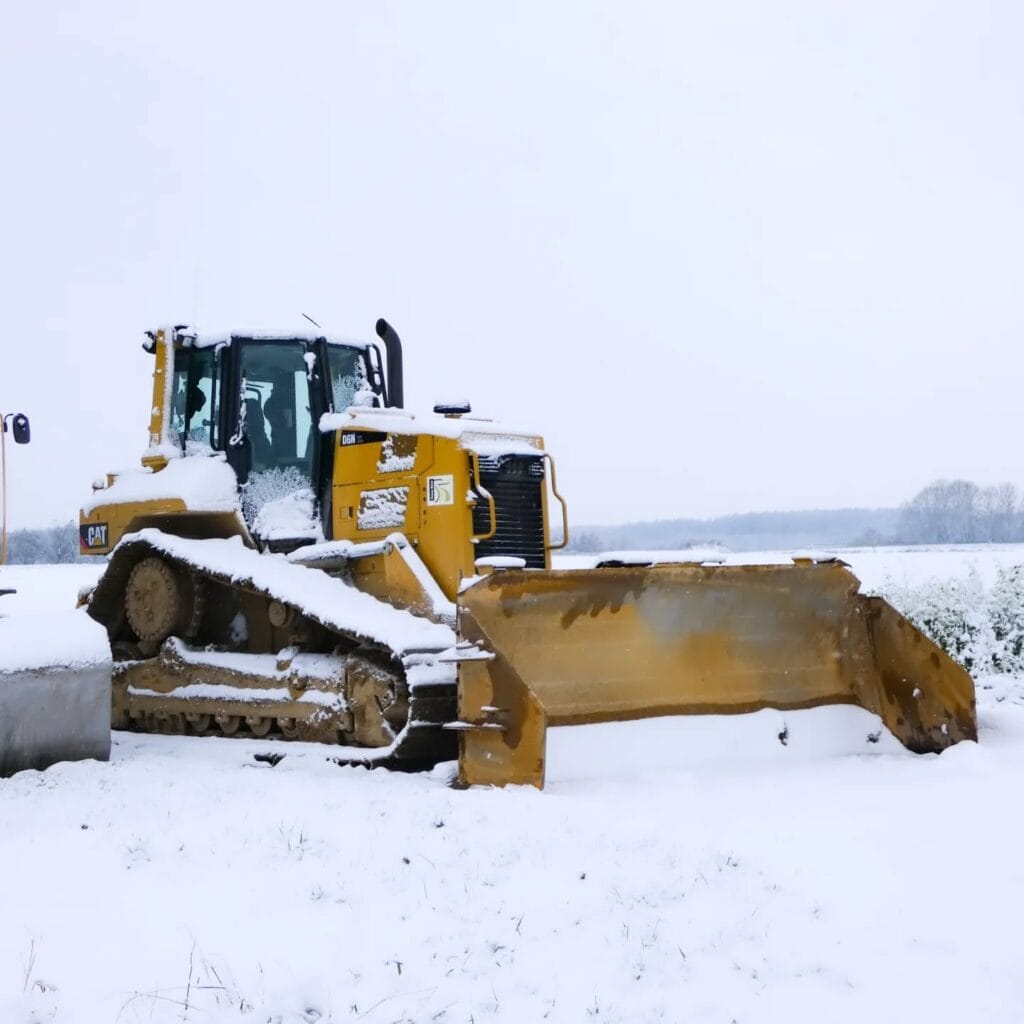What is a bulldozer? Discover the answer to this common question and learn about this powerful heavy-duty machine designed for large-scale earthmoving and material handling tasks. Explore its features and versatility. Engineered for strength and efficiency, bulldozers are essential across multiple sectors, including construction, mining, and agriculture, where their rugged design and operational capacity support diverse, high-demand applications. This article will examine the technical aspects of heavy-duty machine, their classifications, core functions, and the advantages they deliver within industrial and environmental settings.
Table of Contents

What is a Bulldozer?
A bulldozer also known as a dozer is a robust and versatile piece of heavy equipment engineered for large-scale earthmoving and material handling applications. Distinguished by its tractor-style chassis and equipped with a front-mounted steel blade, this earth mover is essential in industries requiring substantial force and precision. They have key components which include:
- Blade: The primary steel implement for pushing, cutting, and grading materials, with specialized blade types for various tasks.
- Tracks: Wide, reinforced tracks provide superior traction and stability, particularly on rough or uneven terrain.
- Engine: A high-powered engine delivering the torque necessary to drive the dozer and operate auxiliary functions under demanding conditions.
Originally developed from agricultural tractors in the early 20th century, dozers have evolved to meet the rigorous requirements of construction, mining, and land clearing. Advancements have enhanced their adaptability, efficiency, and power, cementing their role as indispensable assets in heavy-duty operations.
Primary Uses.
This category of earth movers is integral to various industrial operations, with applications including:
- Land and Debris Clearing: Vital for site preparation in construction and agriculture, facilitating unobstructed workspace for subsequent operations.
- Earthmoving and Excavation: Efficient relocation of soil and aggregate materials to establish level foundations or structural bases.
- Grading and Surface Leveling: Precision in creating uniform surfaces essential for structural stability in construction and civil engineering projects.
- Road Construction and Maintenance: Preparing and conditioning access routes by removing obstacles, compacting substrates, and ensuring roadbed stability.
- Snow and Rock Clearance: Essential for winter maintenance and site preparation in rocky or uneven terrains, ensuring accessible and safe work areas.

Types of Bulldozers and Their Specific Uses.
Various types are engineered for specialized applications:
- Crawler Bulldozers: Designed with robust tracks, they deliver superior traction on uneven and rugged terrains. These machines are optimal for heavy-duty material handling and excavation in demanding environments. 2 examples include CAT D11 and Komatsu d50p bulldozer
- Wheel Bulldozers: Fitted with wheels instead of tracks, they provide enhanced maneuverability, especially on paved or firm surfaces. They are particularly suited for urban construction sites where operating space is constrained. 2 examples include CAT 844 and Komatsu WD600-6R
- Mini Bulldozers: Compact in design, they are tailored for residential construction or smaller-scale projects, offering effective performance in confined spaces. 2 examples include CAT D1 and Komatsu D37EX-24
- Swamp Bulldozers: Purpose-built for marshy or soft-ground conditions, swamp bulldozers feature wide tracks that distribute weight more evenly, minimizing ground pressure and reducing the risk of sinking.
- Power-Angle-Tilt (PAT): This type provides enhanced blade control, allowing operators to adjust blade angle, tilt, and pitch, making them ideal for precision grading and fine earthmoving tasks.
Key Benefits.
The advantages of utilizing this category of earth movers in industrial applications include:
- Operational Efficiency: Designed to execute high-demand tasks swiftly, they significantly reduce project timelines and associated labor expenses.
- Structural Durability: Engineered for resilience, they are built to endure harsh working conditions, performing consistently across varied environments with minimal degradation.
- Functional Versatility: Adaptable across a range of terrains and tasks, they provide operational flexibility, proving indispensable in sectors such as construction, mining, and agriculture.
- Enhanced Job Site Safety: With the capability to displace substantial volumes of material remotely, they minimize manual handling risks, contributing to a safer, more controlled work environment.

Choosing the Right Bulldozer for Your Needs.
When selecting a bulldozer, industry professionals should evaluate the following critical factors:
- Terrain Specifications: Different models are optimized for specific terrain types; for instance, some are engineered for rugged, rocky environments, while others are more suitable for soft or uneven ground conditions.
- Operational Requirements: Assess the scope and scale of the project to determine the appropriate bulldozer size and configuration, such as whether a compact model or a full-sized bulldozer will meet operational demands effectively.
- Budgetary Constraints: Consider the financial impact of investing in new versus pre-owned equipment, taking into account initial purchase costs as well as long-term maintenance and operational expenses.
Additionally, comprehensive operator training is essential to maintain high safety standards and ensure efficient equipment utilization on site.
Conclusion.
This category is an indispensable heavy machinery that drive operational efficiency across sectors including construction, mining, and agriculture. A comprehensive understanding of the different types (from robust crawler models to compact mini versions) enables industry professionals to select the optimal equipment for their specific operational requirements. Strategic selection enhances site productivity, promotes operational safety, and ensures the longevity and resilience of machinery in demanding environments.

Ningo, founder of Big Machines Today, is a passionate writer and content creator specializing in heavy-duty machinery. Focused on delivering industry insights and trends, Ningo crafts engaging content for professionals. Open to free collaborations on blogs or social media articles, Ningo invites you to connect and explore the Big Machines Today Blog for valuable updates.











[…] encompasses a wide range of applications, including autonomous machinery such as excavators and bulldozers executing on-site physical tasks with precision, as well as sophisticated software systems that […]
[…] students with the skills and confidence to operate a diverse range of heavy machinery, such as bulldozers, backhoes, skid steers, and more. This a 2 years program, where students have on-site training on a […]
[…] Bulldozers are robust and versatile machines designed with large, heavy-duty blades that excel at pushing substantial quantities of soil, debris, or vegetation. Their ability to clear vast areas of land and create level surfaces makes them indispensable for large-scale agricultural projects. Whether preparing fields for planting or managing rugged terrain, bulldozers are essential tools that ensure efficiency and precision in farming operations. […]
Grateful beyond words! 🤩
Hi Loria, appreciate your nice words. I am happy you loved it. Make sure you are subscribed to our email list so you will be notified when we publish any new article.